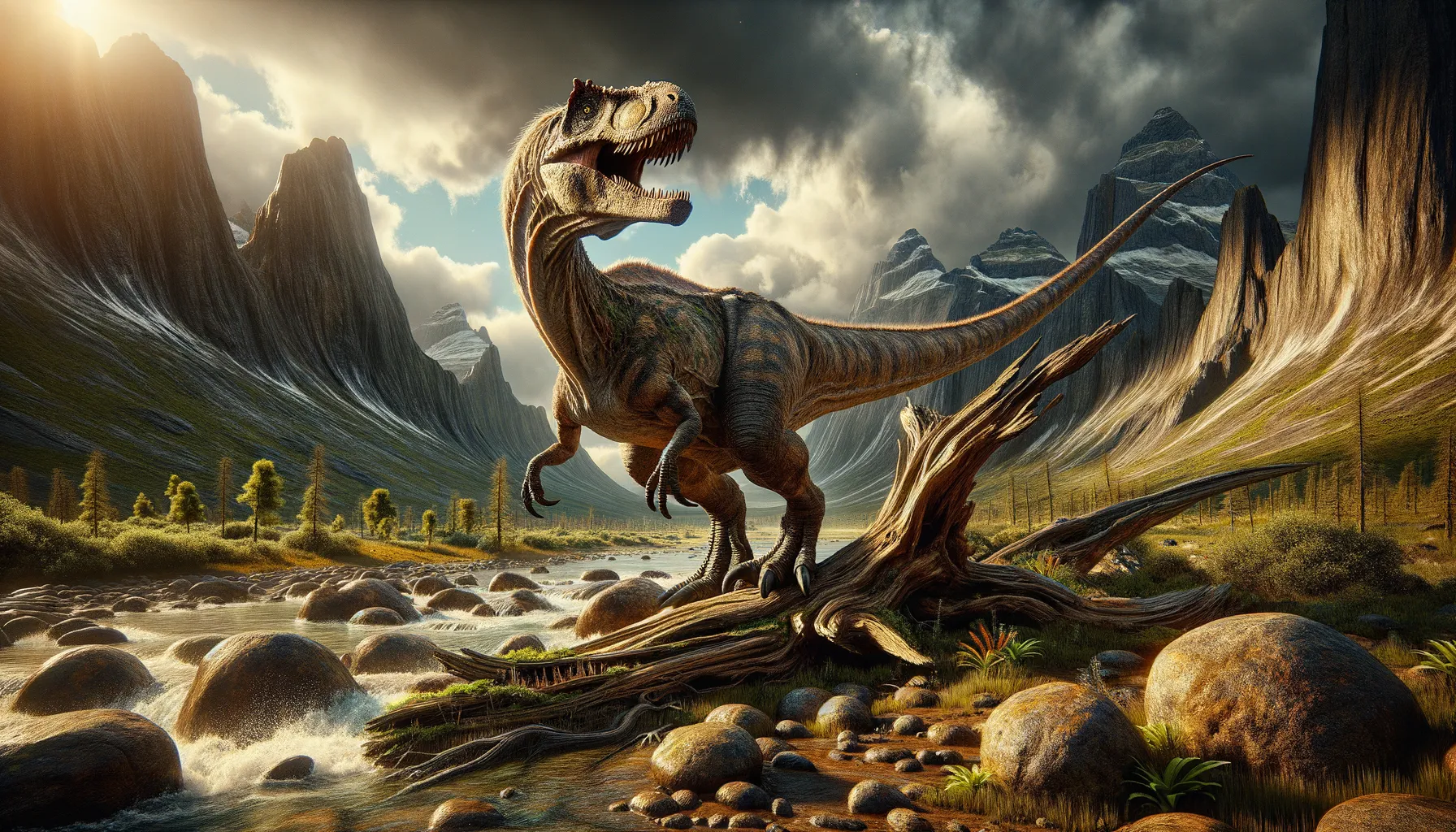
Erlikosaurus
The Clawed Herbivore from Ancient Mongolia
Period
Cretaceous
Length
Measured around 4.5 meters (15 feet) long.
Height
Stood about 1.5 meters (5 feet) tall at the hips.
Weight
Weighed approximately 150 to 200 kg (330 to 440 lbs).
Erlikosaurus was a therizinosaur dinosaur known for its unique blend of features, including a beaked face and long claws. It lived during the late Cretaceous period in what is now Mongolia. As a primarily herbivorous dinosaur, it roamed the ancient landscapes, feeding on a variety of plants. Its discovery has provided fascinating insights into the evolution and behavior of therizinosaurs.
Diet
Erlikosaurus was likely an herbivore, feeding on a variety of plants. Its beak and long claws suggest it could strip leaves and manipulate vegetation efficiently. This diet would have been abundant in its lush, Cretaceous habitat.
Hunting
As an herbivore, Erlikosaurus did not hunt for prey. Instead, it foraged for plants and foliage in its environment. It likely used its claws to reach and manipulate branches to access food sources.
Environmental challenges
Erlikosaurus faced various environmental challenges, such as climate shifts and competition for food. The changing landscape and availability of resources would have impacted its survival. These challenges required adaptability to thrive in different ecological niches.
Speed
Relatively slow-moving due to its size.
Lifespan
Estimated to live around 30 years.
First discovery
Discovered in Mongolia in the 1970s.
Fun Facts
- Erlikosaurus was a feathered dinosaur that lived about 90 million years ago during the Late Cretaceous period.
- This dinosaur was a therizinosaurus, which is a group known for their long necks and massive claws.
- Erlikosaurus had a bird-like beak that it used to nibble on plants, making it one of the few herbivorous theropods.
- Its name, Erlikosaurus, is inspired by 'Erlik', a god from Mongolian mythology.
- Erlikosaurus fossils were first discovered in Mongolia in the 1970s, providing important insights into dinosaur evolution in Asia.
- Unlike its terrifying theropod cousins, Erlikosaurus was a gentle giant, relying on its size for defense rather than speed.
- Paleontologists believe that Erlikosaurus used its large claws not just for defense, but also to pull down branches for feeding.
Growth and Development
Erlikosaurus likely grew rapidly after hatching to avoid predation. Juveniles would have been vulnerable, requiring shelter and protection in dense vegetation. Its growth patterns may have varied based on environmental factors and food availability.
Habitat
Erlikosaurus inhabited floodplain environments with abundant vegetation. These areas provided ample food sources and protection from predators. Its habitat would have consisted of lush landscapes with a variety of plant life.
Interaction with other species
Erlikosaurus likely interacted with other herbivorous species in its environment. It might have competed for resources with similar-sized dinosaurs. Its presence also would have been noted by predators, requiring vigilance and group strategies for protection.
Natural lifespan
Erlikosaurus had a natural lifespan of about 30 years.
Reproduction
Erlikosaurus likely laid eggs in nests, similar to other dinosaurs of its type. These nests would have been strategically placed for protection from predators. Parental care may have been present to some extent, especially during the vulnerable early stages of life.
Social behaviour
Erlikosaurus may have lived in groups or small herds for protection. Such group living would have provided safety in numbers from predators. Social interactions could also include cooperative foraging and nesting.
Fossil locations
Fossils of Erlikosaurus have primarily been found in Mongolia. These discoveries have been crucial in understanding therizinosaur evolution. The fossils are mostly concentrated in the Bayankhongor region, known for rich dinosaur remains.
